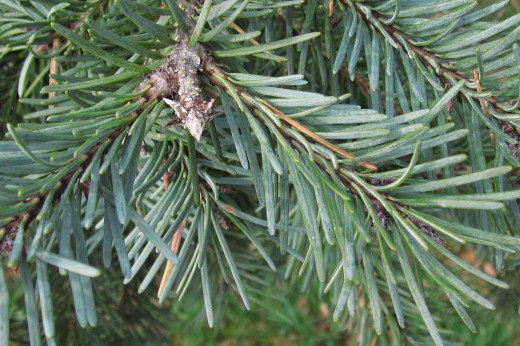Around this time of year, city sidewalks are packed with Christmas tree options, including potted spruces and other evergreens. At first glance, a live potted tree seems like the most sustainable solution for anyone with the garden space to accommodate a conifer.
The only trouble is that the holiday season doesn’t really coordinate with, well, the actual seasons. “When you bring a tree in from the cold and water it in late December, you’re interrupting its dormancy period,” says Chris Roddick, Brooklyn Botanic Garden foreman of grounds. Water starts flowing through the tree’s roots and vascular tissue as it would during a spring thaw. Then if you plant it outside in January, the sudden chill damages the tissue, causing the tree to become severely dehydrated. This is why most potted Christmas trees are dead by spring.
Is there any way to avoid this fate? You can probably shepherd your potted Christmas tree toward a long life as a garden plant with a little TLC.
First, choose a tree that’s suited for New York City’s climate and your site conditions. You’ll likely have better luck if you go to a nursery or garden center with a knowledgeable staff and a decent selection than if you buy one from a sidewalk sale. In any case, the tree’s tag should include growing conditions for its species. Remember, Brooklyn is in USDA Zone 7B now.
Then plan to keep your tree inside for only a few days, tops. A tree can handle being inside for a short time during the winter, much as it would weather an unseasonably warm spell. But the longer you keep it inside, the more stress you place on it. So bring it inside on Christmas Eve, and put it back out again on Boxing Day.
Hold off on planting the tree until spring, when it would naturally emerge from dormancy. In the meantime, place your tree outside in its pot, insulate the pot with mulch, and water it whenever the soil dries out. Plant it in late March or early April, and it will stand a chance of surviving long term.
More: Planting a Potted Tree or Shrub in Your Garden
Another possibility: choose a tropical tree that will live on as a houseplant after the holidays, says Jennifer Williams, curator of the Shakespeare and Fragrance gardens and an indoor plant expert. There are quite a few conifers from warm climates that can make good houseplants.
The Norfolk Island pine is one of the most common species sold as a Christmas tree. It’s native to the south Pacific and can grow well indoors in a sunny spot if you mist it regularly to mimic the humidity of its habitat—New York City apartments tend to be dry in the winter. Monkey puzzle trees and southern yews are two more good options.
And of course, you’ll see plenty of tabletop potted herbs like rosemary, bay laurel, and myrtle, which make lovely, petite “trees.” “These are all Mediterranean, so they need relatively dry soil. Let them dry out between waterings, and make sure they get lots of light,” says Williams.
When summer comes, if possible, take your plant outside for a bit. Some natural light and air will do them good in warm weather.



